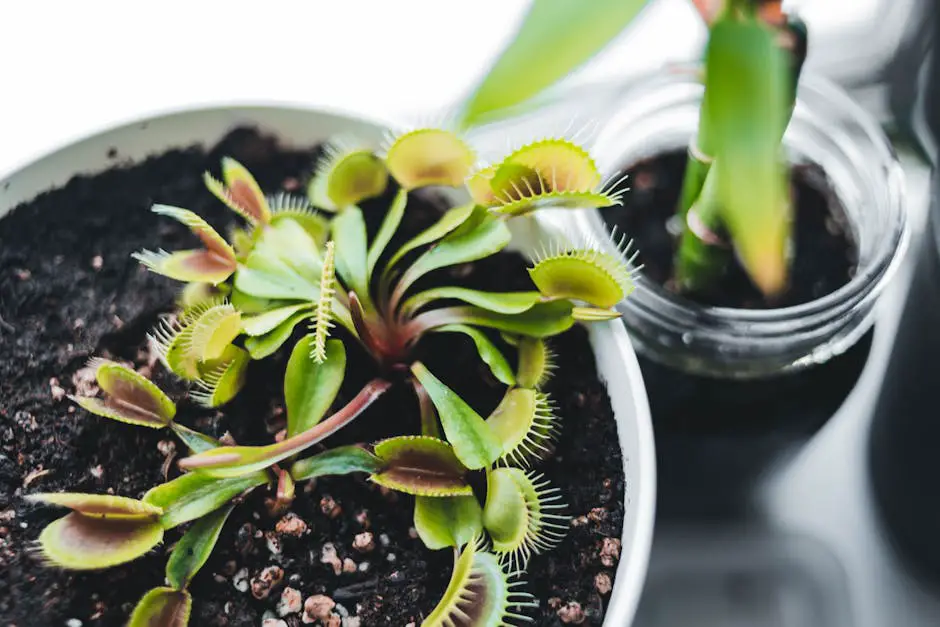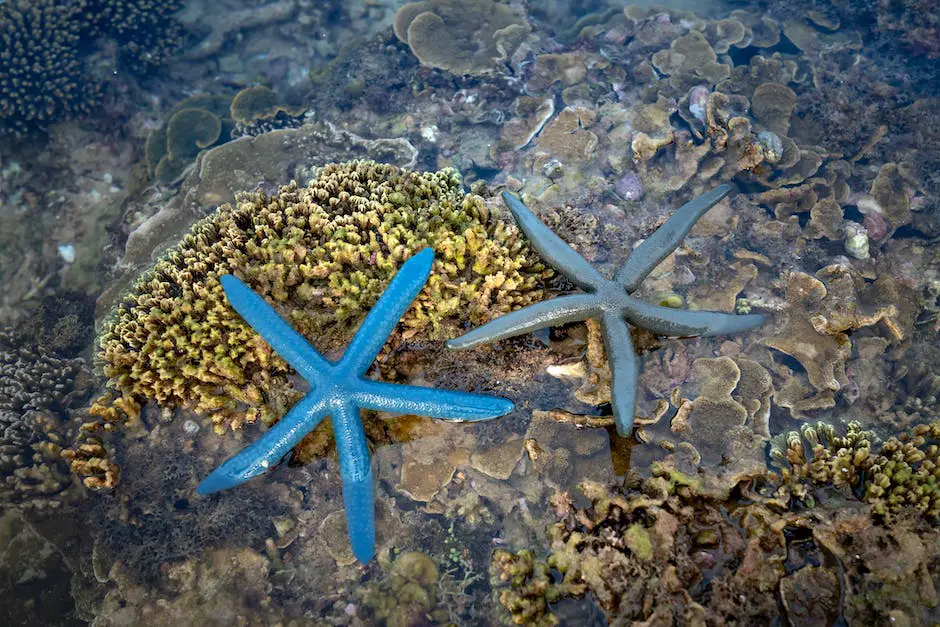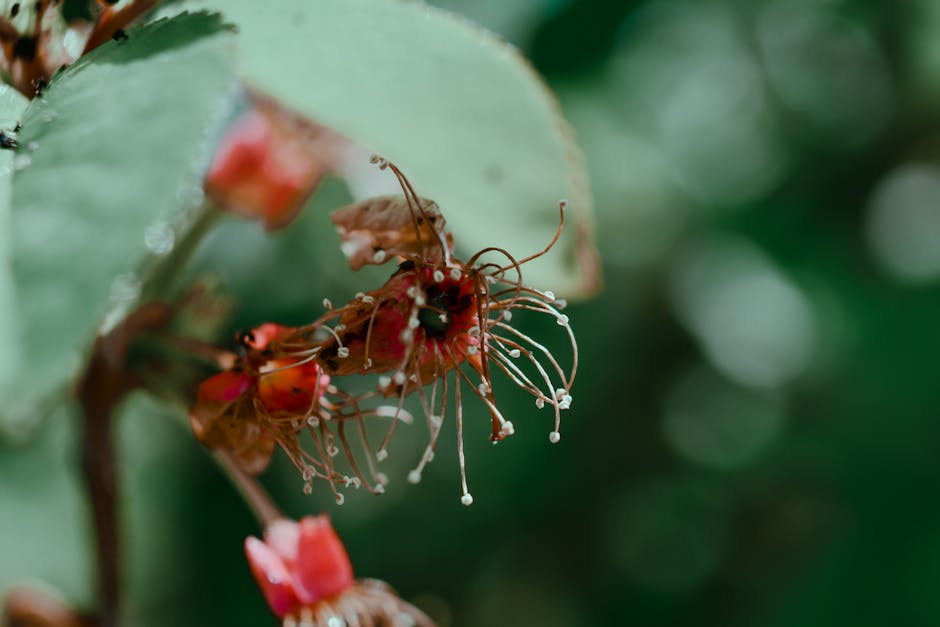Sundews, or Drosera, represent a fascinating blend of beauty and survival strategy among plants. By turning to a carnivorous lifestyle, these plants have adapted to some of the most nutrient-poor soils, showcasing their remarkable resilience and evolutionary innovation. This article explores the intriguing world of sundews, examining their methods of capturing prey, their digestive mechanisms, and their vital role within their ecosystems. As we uncover the secrets of these carnivorous plants, we delve into the characteristics that enable sundews to flourish in environments where many other plants cannot survive.
Biology and Physiology of Sundews
Sundews, or Drosera, are a remarkable group of plants that have deviated from the typical photosynthesis-only lifestyle of their green cousins to adopt a more carnivorous diet. This fascinating adaptation allows them to thrive in nutrient-poor soils where other plants struggle for survival. Through a combination of unique physical traits and biochemical strategies, sundews have turned into proficient hunters, luring, capturing, and digesting their prey.
The Art of Attraction and Capture
One of the sundew’s most striking features is its leaves, adorned with tentacle-like protrusions tipped with glimmering droplets. These droplets, gleaming like morning dew under the sun, are not mere water but a sticky, mucilaginous substance. It’s this feature that gives the sundew its name and its prey a one-way ticket to digestion. The glistening droplet is a concoction of sugary substances serving a dual purpose: attraction and entrapment. Insects, drawn to the promise of nectar, find themselves ensnared upon contact. The more they struggle, the more entangled they become, much like a fly in a spider’s web.
The Deadly Embrace
Upon capturing its prey, the sundew’s leaf undertakes a remarkable movement, curling around the trapped insect. This action, which can span from a few minutes to hours depending on the sundew species, ensures that the insect is in full contact with the digestive glands. It’s a slow but sure death hug, from which there’s no escape. This movement is not just for ensuring contact; it also minimizes the prey’s chances of breaking free and serves a signal to ramp up the production of digestive enzymes.
Digestive Brilliance
The glue that initially trapped the insect isn’t just for holding it in place but also begins the digestive process. Enzymes within the mucilage start breaking down the soft parts of the insect’s body even before the leaf wraps around it. Once fully enveloped, specialized glands on the leaf surface secrete additional digestive enzymes, breaking down the victim into a nutrient-rich slurry. This “soup” is then absorbed back into the leaf, delivering a much-needed dose of nitrogen and other essential nutrients directly to the plant.
Adaptation to Habitat
Sundews have honed these carnivorous skills as a response to their habitat. Many grow in bogs, fens, or the sandy soils of heathlands—environments where nitrogen, a critical component for plant growth, is severely lacking. By evolving to supplement their diet through insects, sundews turn a limitation into an advantage, enabling them to colonize areas where other plants cannot.
The Evolutionary Edge
The carnivorous lifestyle of sundews showcases a remarkable example of evolutionary innovation. Through a combination of structural adaptations (the sticky, enzyme-rich droplets) and behavioral strategies (leaf movement to ensure full digestion), sundews demonstrate how life can adapt to fill every ecological niche, no matter how inhospitable it might seem. Their ability to derive sustenance from insects allows them to flourish in environments where they face little competition from other plants, giving them a clear edge in the battle for survival.

Sundew Plant
Habitat and Geographic Distribution
Diving into the widespread home of sundews, these captivating plants are globetrotters with a presence across diverse geographies. From the swamps of the Southeastern United States to the vibrant rainforests of South America, and the untamed wilderness of Australia’s Outback, sundews have mastered the art of survival across vastly different ecosystems.
In the U.S., the Eastern Seaboard plays host to various Drosera species, thriving in the acidic bogs alongside pitcher plants and venus flytraps. These environments, characterized by waterlogged, nutrient-scarce soils, push sundews to resort to carnivorism for their mineral intake, leveraging their evolutionary advantage to flourish where other plants falter.
Crossing continents to Australia, a hotspot for sundew diversity, these plants have taken to extremes. Australian sundews have evolved to inhabit everything from temperate rainforests in Tasmania to the arid, unforgiving landscape of the country’s central deserts. This adaptability is a testament to the evolutionary resilience of sundews, with some species like Drosera gigantea reaching impressive heights, showcasing their dominant presence in the ecosystem.
Moreover, the tropical regions of South America reveal sundews that have adapted to life in the humid, dense underbrush of rainforests. Here, sundews employ their sticky tendrils not just for feeding, but also for leveraging the scarce sunlight that filters down through the thick canopy above. Their evolution in these rainforests reflects a meticulous optimization of photosynthesis alongside their carnivorous traits.
Europe, too, offers habitats for sundews, with species found in the peat bogs and marshlands stretching from the British Isles to parts of Scandinavia and beyond. These European species, such as Drosera rotundifolia, have adapted to the cooler temperatures, showcasing the plant’s broad ecological flexibility.
The habitats of sundews profoundly influence their evolution, pushing each species to develop unique adaptations. In nutrient-poor soils, where traditional plant survival strategies falter, sundews turn to carnivorous behavior, showcasing a marvelous evolutionary workaround. Their ability to thrive in diverse and often challenging environments speaks to the intricate balance between adaptation and survival, making sundews a fascinating topic for anyone interested in the nuanced dance of evolution and ecology.

Cultivation and Conservation
Given that sundews (Drosera) have been eloquently outlined to capture the imagination with their carnivorous feeding habits, it’s essential to shift focus to the specifics of their cultivation and the hurdles faced in conserving these unique plants. Cultivating sundews offers an intriguing challenge, weaving a tapestry that combines horticultural skill with a dedication to preserving the delicate balance of ecosystems they represent.
Cultivation of sundews requires an understanding of their intrinsic needs; primarily, a recognition that these plants thrive in environments that mimic their natural habitats. This means creating conditions that ensure high humidity, consistent moisture, and soil that is poor in nutrients but rich in acidity. Peat moss, often blended with sand or perlite, provides an ideal growing medium. The use of non-chlorinated water, typically through rainwater or distilled sources, is crucial to avoid the build-up of minerals harmful to the plant. Lighting, too, plays a vital role, with sundews needing a generous amount of indirect sunlight to flourish and maintain their characteristic sticky droplets that lure their prey.
However, successful cultivation is only half the battle. The conservation of sundews introduces additional layers of complexity. These plants are often threatened by habitat destruction, primarily through land development, agriculture, and peat extraction. The specificity of their habitat needs means that once their natural environments are altered or destroyed, they are exceptionally challenging to rehabilitate. Furthermore, climate change poses a significant threat, altering the ecosystems sundews rely on through shifts in temperature and precipitation patterns.
Another conservation challenge involves the illegal collection and trade of wild sundews. The allure of owning such a unique plant has led to overharvesting from their natural settings, significantly reducing populations in the wild. To combat this, conservationists advocate for the cultivation of sundews from legally obtained seeds or plantlets, thus reducing the demand for wild specimens.
Efforts to conserve sundews and their habitats are varied and include the establishment of protected areas that safeguard critical ecosystems. In addition, initiatives such as habitat restoration and the re-introduction of plants into the wild from cultivated stocks are gradually taking root. Advocacy and education play a pivotal role, raising awareness about the challenges sundews face and the importance of preserving their natural environments. Through these concerted efforts, hope glimmers for the future of sundews, ensuring these fascinating carnivorous plants continue to ensnare insects and the imaginations of plant enthusiasts for generations to come.

Ecological Role and Importance
Shifting our focus to the ecological roles of sundews, these carnivorous flora are not just captivating oddities of the plant world; they are pivotal players in their ecosystems. Beyond their dramatic nutrient acquisition strategies, sundews contribute significantly to maintaining ecological balance and supporting biodiversity.
One of the most intriguing aspects of sundews is their role in insect population control. By trapping and digesting insects, sundews help regulate the populations of these creatures within their habitats. This is particularly important in the nutrient-poor environments they often inhabit, where unchecked insect populations could disproportionately affect other plant species and disrupt the ecological equilibrium.
Moreover, sundews are key in supporting the trophic dynamics of their ecosystems. While they are carnivorous, they also engage in a fascinating form of mutualism with certain insects. For instance, some species of sundews are known to have a more lenient approach toward pollinators, sparing them from their otherwise deadly embrace. This selective strategy ensures that their pollinators can continue to thrive and assist in the plant’s reproduction, highlighting a sophisticated balance between predation and mutual benefit.
Another critical aspect of sundews in their ecosystems is their contribution to soil quality. As sundews break down their insect prey, they not only absorb the nutrients but also indirectly enrich the soil with organic matter. This process helps to gradually improve the soil quality in areas where nutrients are often scarce, benefiting other plant species that share their habitat.
Sundews also serve as an important food source for certain insects and small animals, despite their carnivorous nature. Some specialized species have adapted to feed on parts of the sundew without getting trapped, or they scavenge the remains of insects that have been partially digested by the plant. This interaction further underscores the complex web of relationships that sundews maintain within their ecosystems.
Furthermore, the presence of sundews can be an indicator of the health of an ecosystem. Their reliance on specific environmental conditions means that changes in their populations can signal shifts in ecosystem health, prompting conservation efforts to address potential threats.
In the grand tapestry of their ecosystems, sundews exemplify the intricate balance of nature, showcasing roles that extend far beyond their immediate survival strategies. Their ability to adapt and thrive in challenging conditions, while contributing to the health and stability of their ecosystems, underscores the importance of protecting these unique plants and the habitats they occupy. Through continued conservation efforts, the future of sundews and the biodiversity they support can be safeguarded, preserving the delicate dance of life that unfolds in some of the world’s most fascinating environments.

Sundew Plant
The intriguing characteristics of sundews not only highlight their adaptability and survival strategies but also underscore the delicate balance within ecosystems where they thrive. Sundews are a testament to the incredible diversity of plant life and their essential roles in maintaining ecological equilibrium. As they continue to fascinate and inspire, the conservation of these unique plants and their habitats is paramount for preserving the complexity and beauty of natural ecosystems. Sundews embody the resilience of life and the intricate interconnections that sustain the world’s most unique environments, reminding us of our responsibility to protect these vital ecosystems for future generations.




